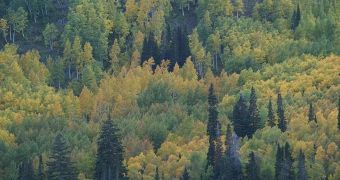According to a new scientific study, it would appear that many trees act like giant chimneys for microbes, releasing the methane gas the microorganisms produce into the planet's atmosphere. This is extremely dangerous when considering that levels of the potent greenhouse gas, which is a lot more harmful than carbon dioxide, have doubled over the past 200 years, and will most likely continue to do so over the next decades. Following on an idea proposed in 2006, a new study has determined that as much as 10 to 30 percent of the world's total methane emissions may be coming from trees, Nature News reports.
Chemists know that waterlogged soils such as marshlands and peatlands produce the dangerous gas, as well as melting tundra soils, when exposed to higher temperatures. Largely responsible for these types of lands emitting methane are anaerobic processes going on underground, which are an absolute requirement for some microbes to survive. They decompose organic matter, and produce the GHG as a direct byproduct. The gas is then redirected through the trees, and sent into the air, experts say. The new discovery could help explain why such large methane concentrations exist in wet tropical regions.
University of South Australia in Adelaide evolutionary biologist Ellen Nisbet says that her previous studies have shown that trees in themselves are incapable of producing the gas. “I'm pretty sure from our studies that [plants] aren't making methane themselves,” the expert adds. “This paper is really showing that methane is moving around the plants, that it's being transported up and out,” Nisbet says. The new investigation was conducted by researchers at the Portland State University, under the direction of atmospheric scientist Andrew Rice.
His team looked at methane emissions originating from three tree species, all of which were flooded. The scientists sought to create the necessary conditions for microbes to begin their anaerobic conversion processes, and release the gas. Despite noticing the microbes perform this, and writing this in their new study, the paper did not convince geochemist Frank Keppler, from the Max Planck Institute for Chemistry in Mainz, Germany. He is the lead author of research saying that vegetation is capable of producing methane all on its own. “It's getting clearer that living vegetation is maybe playing a more active role in emitting methane to the atmosphere than we previously thought,” he says.

 14 DAY TRIAL //
14 DAY TRIAL //